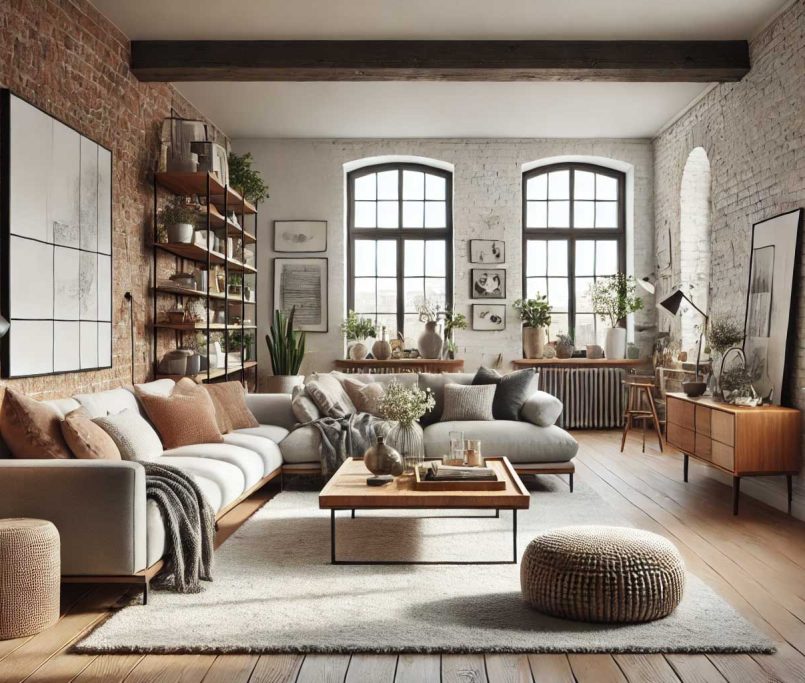The right way to use warm colors at home
At the end of the summer, having a cozy place at home feels great. Also, there is no better time to use warm colors at home than on days when the air is getting colder. be with us. In this article we have explained how you can use warm colors in home interior decoration.
Autumn is the best time to welcome warm colors at home. A palette of natural autumn colors forms the warm colors of the color cycle and can be used to give freshness and freshness to the house and its furniture. By using autumn colors, you can enjoy the warmth and pleasantness of autumn.
But what does it really mean to use warm colors in home decoration? By reading this article, you will understand how you can balance the colors of your home decoration by using the color cycle.
Warm and cool colors

The colors of the red, orange, and yellow families are generally called “warm” and the colors of the green, blue, and purple families are called “cold.”
Think red, peach, pink, amber, burnt brown, and gold against cool colors like smoky green, eggplant, emerald, navy blue, and cobalt. Do you remember the color wheel we learned about in school? A line passed right through the middle of the cycle, dividing it into two groups of warm and cold colors. Of course, shades close to the dividing line (such as purple) can be placed in the hybrid color category.
Warm colors give people a sense of well-being and vitality, and cool colors are usually soothing and convey a sense of freshness and freshness to their environment.
White color feature
Do you think white is cold or hot?
We have to say, both! White gets colder or warmer, depending on the shade used. If you look closely, you can see red, blue, yellow, and purple in white. Of course, according to interior design experts, to understand these very subtle shades of white, you need to have some expertise and practice. These colors can affect how the colors and furniture of the room are seen. Yellow or pink tones make the environment warmer and blue or green tones make the space cooler.
Also, different amounts of lighting affect whether white is warmer or colder. Therefore, many interior designers first experiment with the desired color on a large part of the room wall before painting the whole room.
If you can use a lot of natural light, then everything in the room will look colder, but if the room is lit with artificial light, the environment will look much warmer.
But do not worry about using white color in the house because this color easily matches with any color in the room. The coolness and warmth of white makes it possible for you to take advantage of the warmth and coolness of the environment.
Using a very clean white color with other white colors that tend to be warm makes the home environment warm and cozy and at the same time refreshing.
Gray
Gray, just like white, can be a warm or cool color. If you want the walls of your room to convey a feeling of warmth, turn them gray. Gray, while giving a sense of freshness and freshness to the environment, warms the space with unparalleled elegance, and when this color is used in the living room along with white, it shows the environment very bright, clean and stylish.
Detection of warm or cold colors

How to tell if a color is cold or hot and if a color looks more pleasant. According to experts, colors that are prominent and quite clear are considered cool.
But if you still can not easily tell if the color you want is warm or not, put the pure version of that color next to it. For example, you can put pure white in the color wheel next to the white of your room. In this case, you can immediately recognize that the color tends to be cold or warm.
Warm color effect
Warm colors immediately evoke the meanings of heat, fire and warmth of the sun, and these colors are more inclined towards energy, charm, a sense of coziness, passion, vitality and intimacy. Cool colors, unlike warm colors, turn minds towards water and sky, and as a result can have a calming, concentrating, calm, gentle, soothing and refreshing effect on people.
Colors, in addition to having an effect on people’s mood, can also change the amount of temperature that is felt in the room. For example, indoor space looks warmer and warmer with warmer colors, but at the same time, they make the space look smaller than it really is.
Cold colors also have advantages and disadvantages. These colors make the space look bigger than it really is, but the environment becomes too dull and dull.
Use cold and warm colors in a room
Is it possible to use both cold and warm colors in a room?
The answer is yes! One of the best interior design tricks is to create a subtle balance between warm and cool colors in a room. The dominant colors of the room determine the overall state of the room, but what makes this space feel cohesive and balanced is the temperature of the colors that contrast with the dominant colors of the room. For example, if you want your room to convey a sense of freshness and whiteness, whiten its walls and then add items such as red carpets, ivory fabrics or brass items to the room to make the environment look cozy and intimate.
Decorate the room with warm colors

The use of cooler colors on the walls and ceiling makes the room look more spacious, but at the same time, warm colors can be used in the architectural parts of the house, furniture, lighting, furniture and accessories used in the building.
But how can autumn colors such as mustard, brownish red, persimmon or ocher red be used in decoration and home decoration?
You can replace some of your home appliances with accessories that will immediately make your home look autumn color. For example, use warm-colored blankets and pillows to make your room more cozy and intimate.
goodhousekeeping
.
[ad_2]
The right way to use warm colors at home









